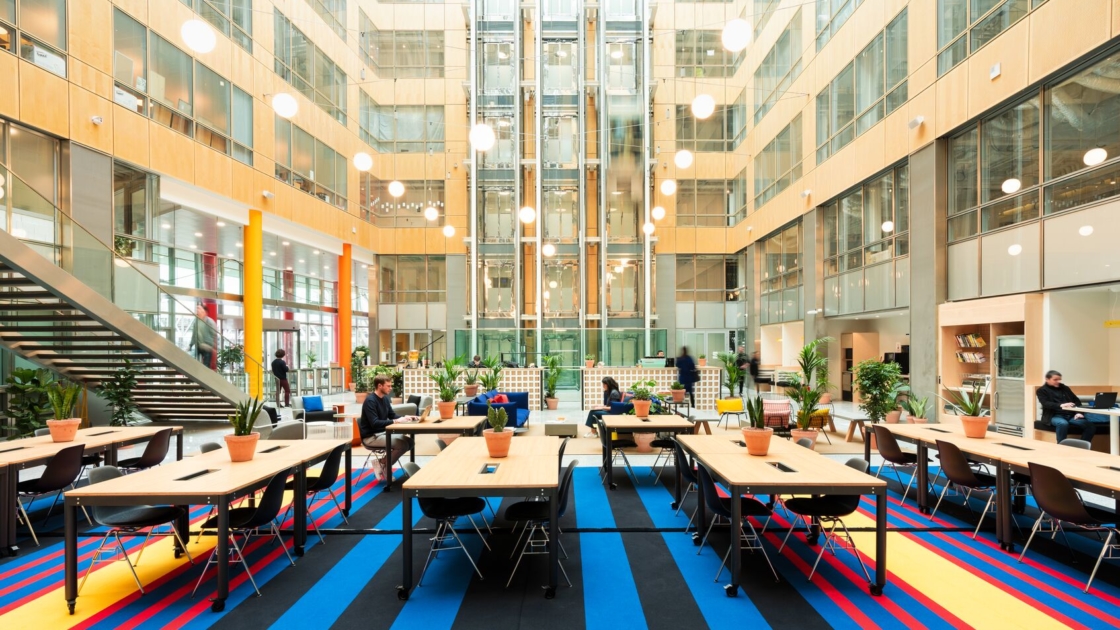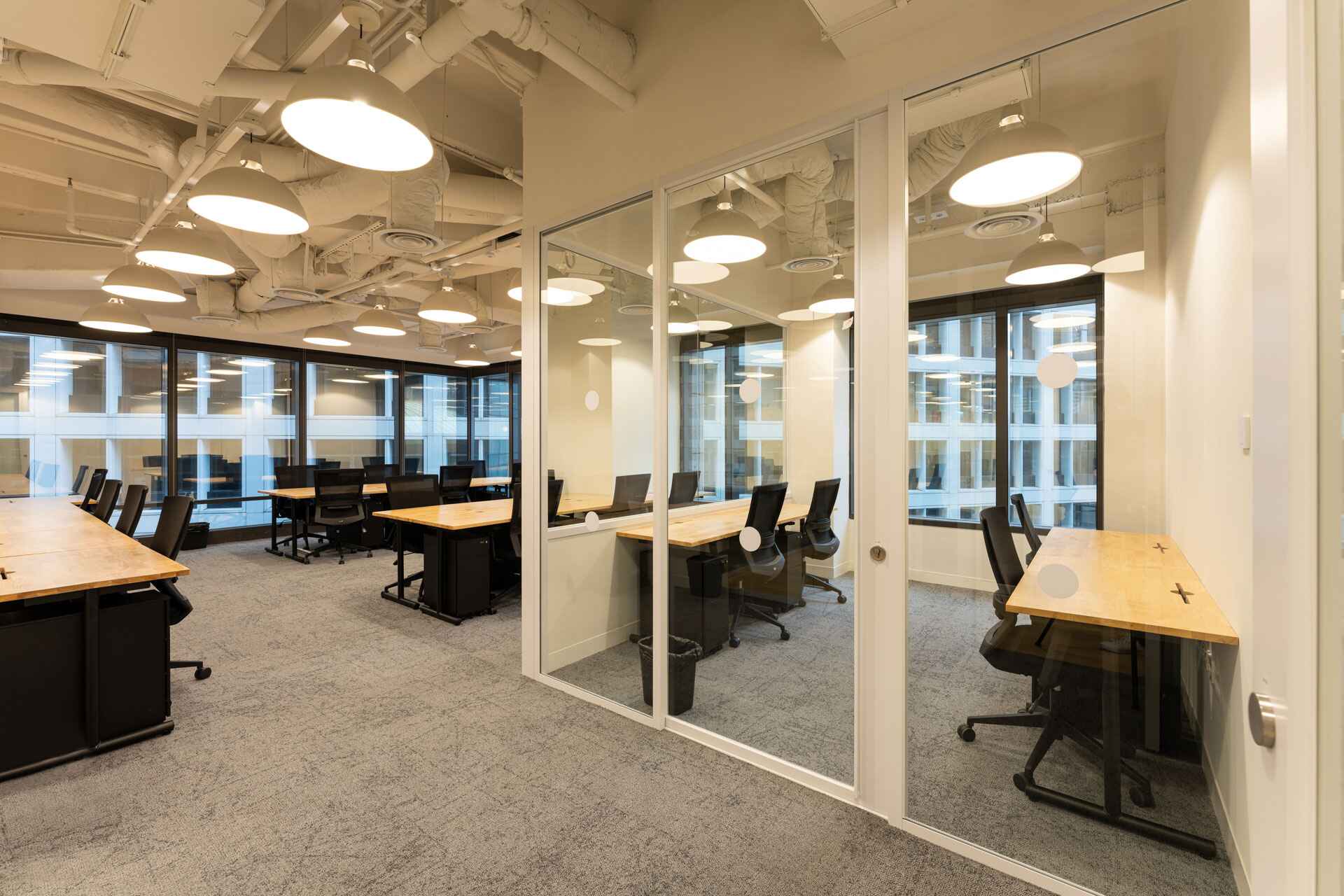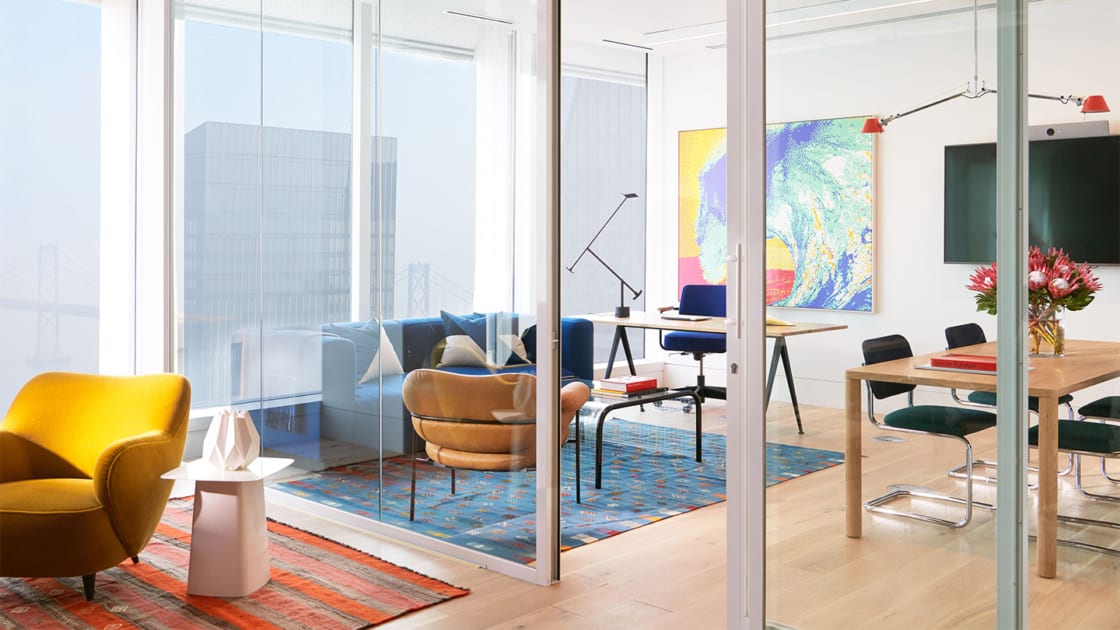The way people collaborate has changed significantly. Technology has given rise to increased flexibility. What once required face-to-face meetings can now be achieved with online meeting software. Moveable, modular furniture has made layouts more fluid and agile and replaced traditional inflexible cubicle designs, which in turn has increased innovation.
With competition increasing, enterprises need to take a more proactive approach to attract and retain talents. The workplace is one of the many attractions a company can offer. It has a direct impact on how people understand a company’s values, culture, and employee engagement.
It has been found that high-quality workplace design improves overall employee health and satisfaction. Physical surroundings impact our comfort, mood, and focus. Workplace design also affects our effectiveness. The proper design increases happiness and reduces sick days. It also boosts productivity, increases focus and enhances employees’ feeling of value. Further, employees make better life choices based on the quality of their workspace.
Workplace design that can easily satisfy employees’ physical and emotional needs can boost productivity. Elements like color, lighting, aroma, greenery, spatial arrangement, furniture, comfort, air quality and temperature, all need to be taken into consideration when designing a workspace to optimize employee engagement, well-being and productivity.
Disengagement and poor workspace design
Companies need to understand that the future workplace is not just a space in which to get things done, but a place for learning, creating, unwinding, and bonding. None of these things can exist without an inspired, happy and engaged workforce.
To understand how to motivate employees who have become disengaged, we need to understand what employee engagement is. An engaged employee is someone who is committed and involved in the company they work for and believes in its values.
According to research published in the Journal of Economy, Business and Management 2018, employee engagement is considered to be one of the most vital factors of organizational success.
Gallup’s State of the Global Workplace: 2021 report cites that a disengaged employee costs organizations 18 percent of their annual salary in lost productivity which equates up to $550 billion annually.
Common signs that your employee or team might be disengaged include increased absenteeism, frequent complaints and excuses, lack of initiative, increased mistakes, refusal to collaborate or “go the extra mile” and doing the bare minimum.
A 2006 study found that 89% of more than 2000 employees surveyed, rate workplace design as important to very important and believed that if the layout were improved, their performance, in turn, would also improve.
As a result, traditional, enclosed offices are not here to stay. Not only because companies need to become agile and let go of traditional hierarchy, but because workforces today have very different demands. The interior architecture needs to progress to match a new generation of its users. In turn, it influences how people behave and perform.
Workspace design can engage the disengaged and changing the physical work environment tends to positively affect an employee’s attitude, mood, engagement, and performance.
How office design promotes collaboration and drives productivity
While efficiency and productivity are the keys to sharpening your competitive edge, workplace design is a differentiating factor that sets your team apart from the competition. For small and medium enterprises starting off with a compact office layout, co-working spaces like WeWork offer a change of scenery and a break away from the traditional work setting. They can also inspire creativity and foster connections with open design, smart amenities and tech integration – especially for the Millennials of today.
Tech integration
Social media is central to the lives of Millennials and Gen Z. This has had a major impact on how they work and what they want from their jobs. Millennials are highly motivated by peers. They crave collaboration, work best in teams and require frequent feedback.
Tech has always transformed workplace dynamics. Laptops, smartphones and convertible tablets ushered in a new era of mobility. This, in turn, has transformed workplace design. New tech continues to transform businesses of all types and sizes. Think wearables, media streaming, wireless charging, cloud-based personal communication services, content sharing solutions and productivity apps. Your workplace design will need to be equipped with integrated technology.
Other trends in workplace design to promote collaboration and drive productivity
Flexible design
Traditional office spaces are designed for fixed use. This model no longer works for today’s business challenges. Modular, adaptable workspaces offer a solution. Flexibility for today and tomorrow is today’s leading workplace design trend. Flexible-use spaces make it easy to adapt to changing employees, projects, and company needs. It’s an ideal solution for a rapidly changing world.
Blended spaces
Open floor plans with a variety of functional spaces can provide an ideal solution for encouraging both collaborations along with privacy and focus. Blended offices offer a mix of private, semi-private, and open workspaces. This makes the most of the benefits of each type of space.
Blended offices divide and define spaces for work styles and tasks. Most modern workplaces include one or more common areas, meeting rooms, unenclosed breakout areas, and casual seating groups.
Quiet zones
Amidst the buzz of collaboration-minded workplaces, companies are providing silent areas as part of activity-based office designs. These zones indicate the desire to avoid spontaneous conversation and concentrate without interruptions.
Lounges
These comfortable spaces stimulate relaxed, impromptu collaboration. Social hubs of the modern workspace, lounges are a new norm and a recognized zone for meetings of the mind between departments and project groups.
Taking these trends into consideration, Peak Reinsurance Company Limited, a Hong Kong-based dynamic reinsurer, wanted a new workplace design that would transform their old ways of working and improve staff well-being and wellness.
They aimed to move away from a traditional layout with high-partitioned desks, into an open, activity-based working environment with height-adjustable desks, flexible meeting areas, collaboration spaces and breakout areas that will enhance collaboration, and cross-department communication and support a variety of working styles.
Going even further, Hong Kong-based architectural design company Eskyiu, completed the Platinum LEED 22-story office building in late 2019, which set the bar high for innovative workplace design. The building features an eye-catching greenscape vertical facade interlaced with floor-to-ceiling windows, a rooftop farm and a 200-meter running track.
Other innovative design details include urban-inspired 3D printed graphics, removable metal wall plugs that allow for large murals, gender-neutral washrooms with dramatic 6m-high ceilings and elevators that automatically detect office workers’ destinations by reading an app on their mobile phones.
On the upper floors, workspaces are bright and flexible with huge windows, a well-equipped kitchen, executive shower and lactation rooms. Everything was designed with employee well-being in mind. Convenience, functionality, tech integration, recreation, art and culture all come together in this state-of-the-art workplace design. WeWork’s Hong Kong locations boast contemporary workplace designs featuring spacious light-filled multifunctional spaces with tasteful art embellishments, environmentally-friendly materials and outdoor terraces for inspirational views.
The way people work and collaborate has evolved, with technology accelerating the transformation from traditional cubicle-style layouts into the flexible, multifunctional workspaces that we are seeing more and more of today. When employee well-being is given high priority, you can expect to drive productivity, innovation and engagement. Is it time to update your company’s workspace?
If you’d like to learn more about how we can creatively structure workspaces and locations to serve your business and staff, please visit wework.hk to connect with us today.



